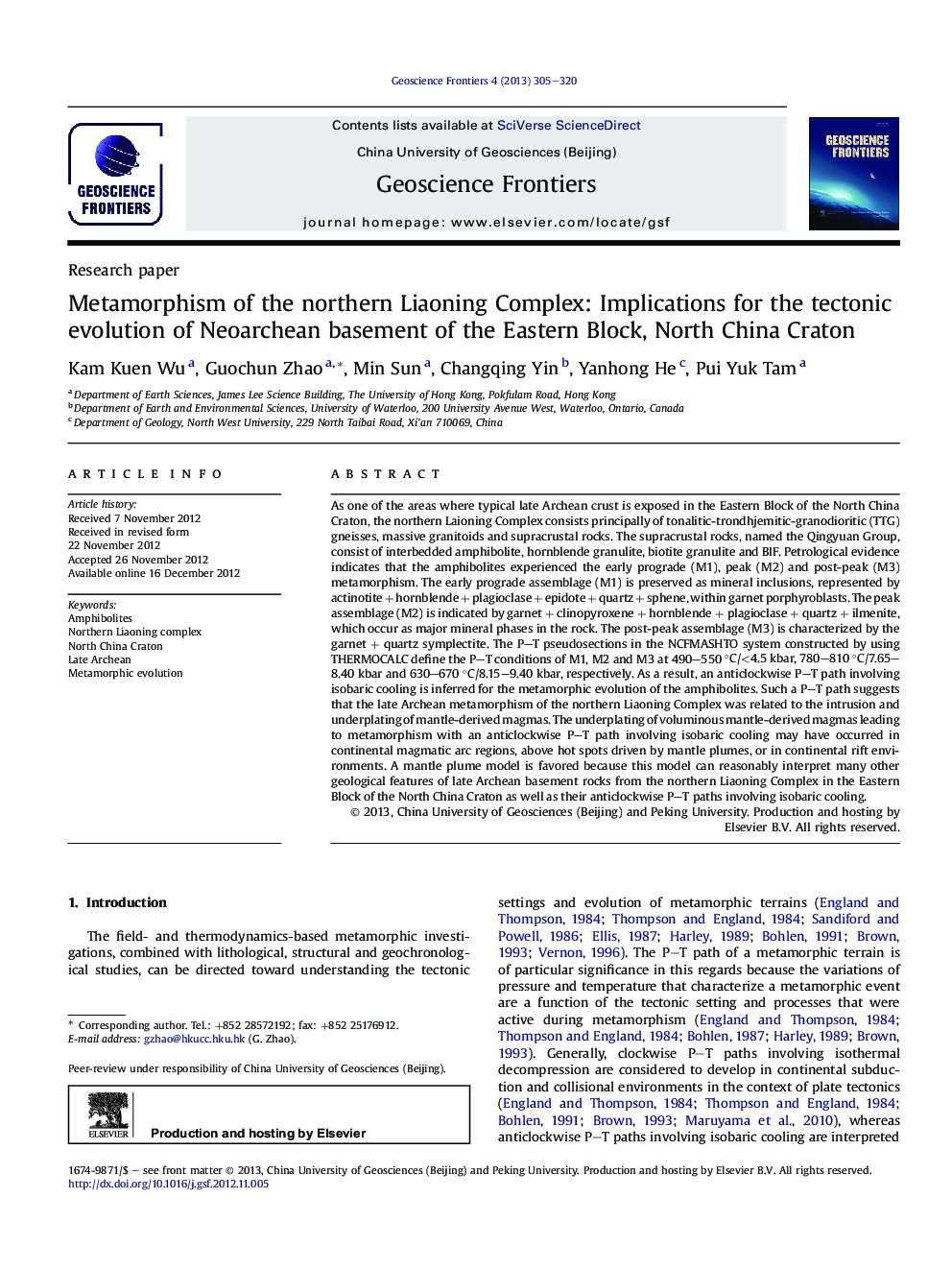| Article ID | Journal | Published Year | Pages | File Type |
|---|---|---|---|---|
| 4681594 | Geoscience Frontiers | 2013 | 16 Pages |
As one of the areas where typical late Archean crust is exposed in the Eastern Block of the North China Craton, the northern Laioning Complex consists principally of tonalitic-trondhjemitic-granodioritic (TTG) gneisses, massive granitoids and supracrustal rocks. The supracrustal rocks, named the Qingyuan Group, consist of interbedded amphibolite, hornblende granulite, biotite granulite and BIF. Petrological evidence indicates that the amphibolites experienced the early prograde (M1), peak (M2) and post-peak (M3) metamorphism. The early prograde assemblage (M1) is preserved as mineral inclusions, represented by actinotite + hornblende + plagioclase + epidote + quartz + sphene, within garnet porphyroblasts. The peak assemblage (M2) is indicated by garnet + clinopyroxene + hornblende + plagioclase + quartz + ilmenite, which occur as major mineral phases in the rock. The post-peak assemblage (M3) is characterized by the garnet + quartz symplectite. The P–T pseudosections in the NCFMASHTO system constructed by using THERMOCALC define the P–T conditions of M1, M2 and M3 at 490–550 °C/<4.5 kbar, 780–810 °C/7.65–8.40 kbar and 630–670 °C/8.15–9.40 kbar, respectively. As a result, an anticlockwise P–T path involving isobaric cooling is inferred for the metamorphic evolution of the amphibolites. Such a P–T path suggests that the late Archean metamorphism of the northern Liaoning Complex was related to the intrusion and underplating of mantle-derived magmas. The underplating of voluminous mantle-derived magmas leading to metamorphism with an anticlockwise P–T path involving isobaric cooling may have occurred in continental magmatic arc regions, above hot spots driven by mantle plumes, or in continental rift environments. A mantle plume model is favored because this model can reasonably interpret many other geological features of late Archean basement rocks from the northern Liaoning Complex in the Eastern Block of the North China Craton as well as their anticlockwise P–T paths involving isobaric cooling.
Graphical abstractFigure optionsDownload full-size imageDownload as PowerPoint slideHighlights► Amphibolites from the northern Liaoning Complex preserve three metamorphic stages (M1, M3, M3). ► P–T conditions of M1, M2 and M3 were estimated using the THERMOCALC pseudosections. ► The estimated P–T conditions define an anticlockwise P–T path with near-isobaric cooling. ► A mantle plume model is favored to explain the metamorphism of the northern Liaoning Complex.
